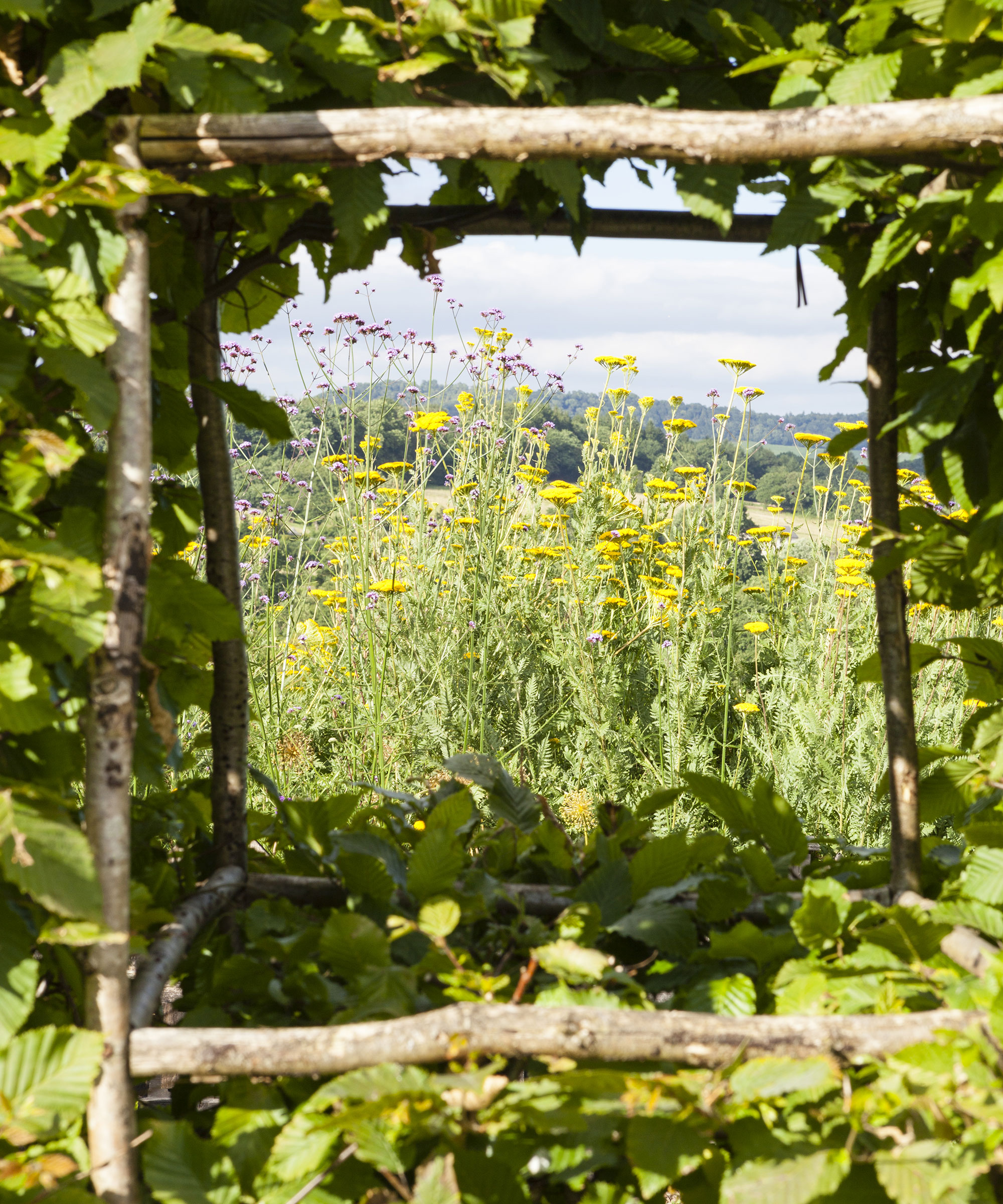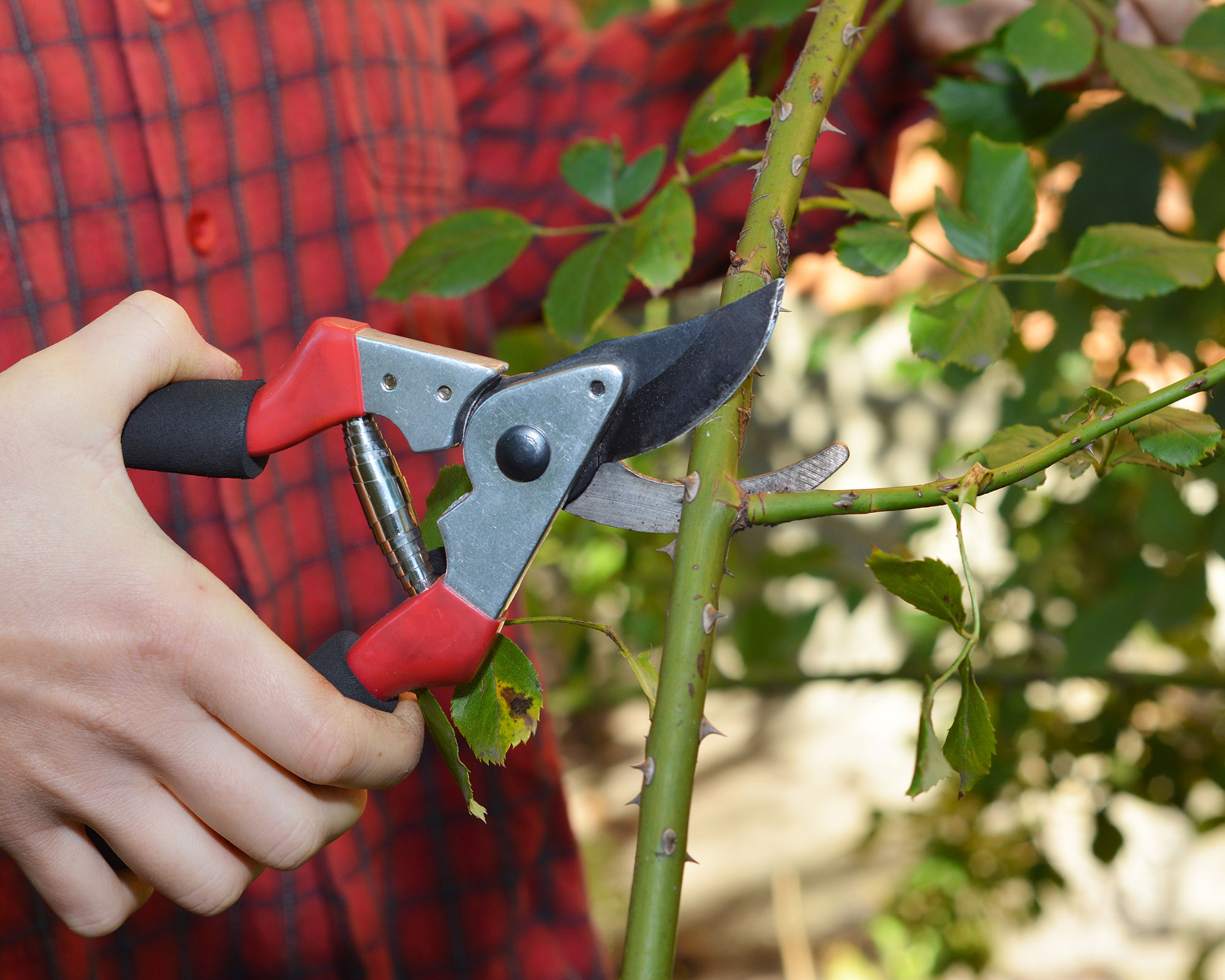How to protect plants from wind damage and help your garden survive bad weather
Our expert tips on how to protect plants from wind damage will help when high winds are threatening to strike


Learning how to protect plants from wind damage is a must when windy weather is forecast. In strong winds, plants can be damaged by stems snapping, and leaves and buds getting knocked off. Wind will also make plants dry out faster, adding yet more stress to your plants.
If your garden is in an exposed location such as on a hill or by the sea you will definitely need to find out how to protect plants from wind damage. But even if your garden is relatively sheltered your plants may still be subject to wind damage in extreme weather conditions. High winds can damage young seedlings, force over taller bedding plants and even uproot trees.
Some plants are hardy and won't be troubled by wind damage. However, many plants won't respond well to be battered by high winds, whether they're planted in pots or in the ground. Being prepared and providing protection before this happens is just as important as protecting plants from frost in winter and dealing with common pests throughout the year.

It's worth bearing in mind that every garden is different when it comes to wind direction. Work out where the wind in your garden typically comes from. Wind direction and strength will vary according to the season too. Search online to help you find information about the ‘prevailing winds’ in your area.
'The lie of the land (topography) affects wind direction and must be taken into account,' according to the experts at the Royal Horticultural Society. 'Hilly sites may need shelter on several sides as wind can come over a hill and also produce gusts round the sides. Wind can also be funnelled along valleys, between lines of trees or tall buildings, creating what is known as a wind tunnel.'
Find out what you can about your own garden then factor in this information as you'll need it to prepare a garden for winter, which is when strong, damaging winds are typically more of a problem in many areas.

6 tips on how to protect plants from wind damage
These simple steps will help keep your plants safe from damaging winds and are key when it comes to how to protect plants from winter too.
1. Plant a living windbreak
A living windbreak is another term for a hedge so adding one to your yard is not a short term fix but more of a longer term project. If your garden is very exposed and you have form when it comes to losing plants then living windbreaks of fast growing trees and hedging plants are the most attractive and long-lasting option.
Windbreaks are semi-permeable barriers that reduce wind speed and provide shelter for plants. Choose shrubs and trees that are suitable and plant them fairly close together. The best time of year to plant your living screen is in fall, winter or early spring.
'Whether trying to create some shelter from the wind in your garden or a windbreak across fields, planting trees and shrubs can provide an excellent screen,' says Morris Hankinson, MD of Hopes Grove Nurseries. 'These living windbreaks create a semi-permeable barrier to reduce the wind speed and therefore provide shelter. Alders are a popular choice for windbreak hedging plants as they grow to a good height quickly, are easy to establish, harbour few pests and diseases, while keeping their protective wind suppressing foliage late in the season. Plus they're a good choice if you're on a budget.'
The larger the area that you are able to plant the more effective the windbreak will be, especially when using a mix of trees and shrubs. This sort of combination, spaced carefully, works best, slowing the wind but allowing it to permeate through.
If you live by the sea choose trees such as Italian alder, common alder, hornbeam, white willow and mountain ash, which are all suitable for exposed coastal sites. When it comes to shrubs for seaside gardens, hawthorn and sea buckthorn are among the best coastal plants for adding a windbreak.

2. Erect a woven artificial windbreak
To be effective, windbreaks must work by slowing down the wind to reduce its strength so you also have the option of putting up an artificial screen. These are a great idea as they offer immediate protection.
The best ones are made from materials such as woven willow or hazel hurdles that allow wind to filter through and in so doing blunt its force. Solid garden fences aren't suitable for slowing down high winds but woven hurdles work really well.
Artificial garden screening can be used alone or together with living windbreaks to provide shelter while the plants get established. Measure up accurately rather than leaving it to guesswork as windbreaks should be slightly wider than the area needing protection, to prevent wind whipping round the edges and causing damage to plants you thought were protected.

3. Think carefully about where you plant
Take a fresh look at your garden and assess which areas are most exposed to any prevailing winds. Gardening in areas with high wind can be tricky, so opt for plants that are happy in windy gardens and take care when choosing where in the garden to plant them.
If you have a sloping garden, for example, plants at the top or the bottom will be more exposed than any planted in the middle. In the northern hemipshere, remember that any plants on the south side of your house on a sheltered patio or deck, as well as those planted against sheds and other garden buildings will get natural protection from north winds.
The best way to prevent wind damage is to choose plants that are hardy enough to withstand the winter conditions they will be living in. 'If you just have to have that Southern Magnolia, choose a place in your landscape where it can be protected from severely cold north winds,' says horticulturalist Daniel Carl of Arrowwood Landscape Design based in Pennsylvania. 'Also, plant cold sensitive plants in the spring rather than the fall. This will give them more time to establish their new roots before the stress of winter.
There are lots of types of ornamental grass and low-growing ground cover plants that will tolerate wind more easily, making them good choices for windy gardens.

4. Give tall plants additional support
If you know high winds are forecast check around your yard to spot any potential problems that need addressing ahead of time. Add support to tall plants and stop them snapping by driving stakes or poles firmly into the ground and tying plants securely to them. Wigwam designs are generally the sturdiest option.
Make sure obelisks and other climbing support ideas are well anchored, and that plants growing over them are tied in. Check trellises to make sure they are firm and that climbing plants are tied to them securely.
Pots, planters and other container gardening ideas with displays of tall plants should be moved to a sheltered spot and given additional canes to support them if you think it's necessary.

5. Give plants a quick tidy-up before high winds arrive
Cast your eye over your yard and be on the lookout for vulnerable looking branches and stems that could snap off in high winds. Trim back any overhanging branches that could cause damage to plants growing underneath or sheds and cabins in the event they are felled by wind.
Trim back any top-heavy plants to give them more stability. In the fall it's a good idea to prune roses to reduce the height of shrubs by around a third to help protect them from winter winds.
Some shrubs can suffer with 'wind rock' too, where the wind loosens roots and in the worst case up-ends the plant from the ground, so it's worth doing a check to make sure that shrubs are planted firmly in the ground.

6. Cover small plants with cloches
If windy weather is forecast it's worth protecting small and delicate plants for peace of mind as winds could wreak havoc. Try improvising with a homemade cloche. Simply cut several large plastic bottles in half and invert the top halves over your plants as a quick and easy on the spot solution. Be sure to push them firmly into the ground so they aren't blown away once the wind whips up.
Protect tender young winter or spring vegetable crops in your kitchen garden in the same way too. If you have a large area of vegetable garden consider net cloches or polytunnels to reduce wind effects. Or use gardening fabric or burlap to cover the entire area. Weigh down the corners with bricks or use stakes to keep in place. If the weather is icy cold as well as windy, you may need a frost cloth for plants to give them some added protection too.


Lifestyle journalist Sarah Wilson has been writing about gardens since 2015. She's written for Gardeningetc.com, Livingetc, Homes & Gardens, Easy Gardens and Modern Gardens magazines. Having studied introductory garden and landscape design, she is currently putting the skills learned to good use in her own space where the dream is establishing a cutting garden.
